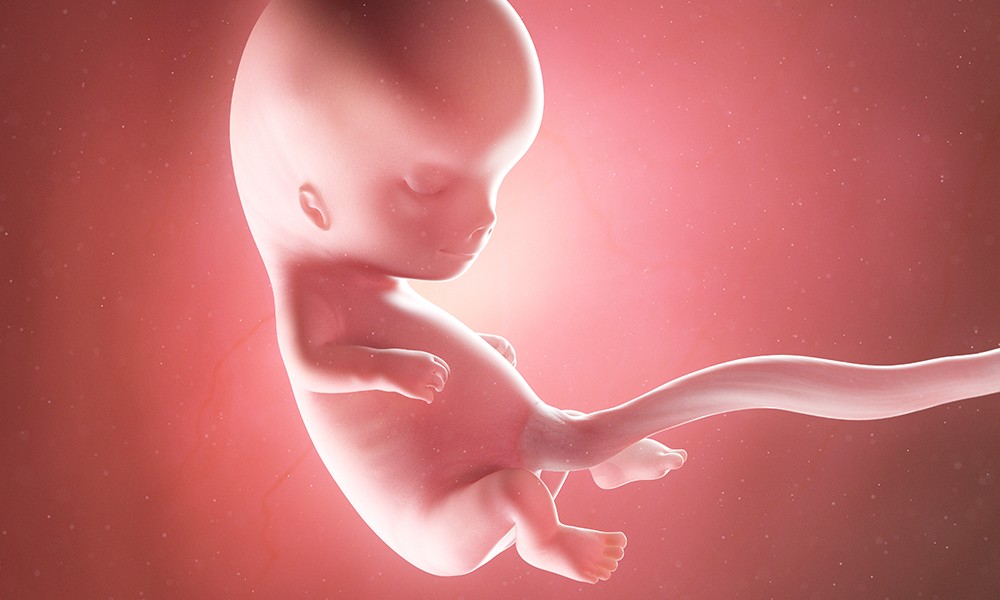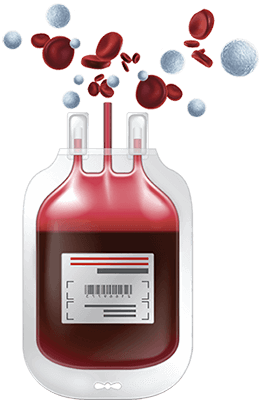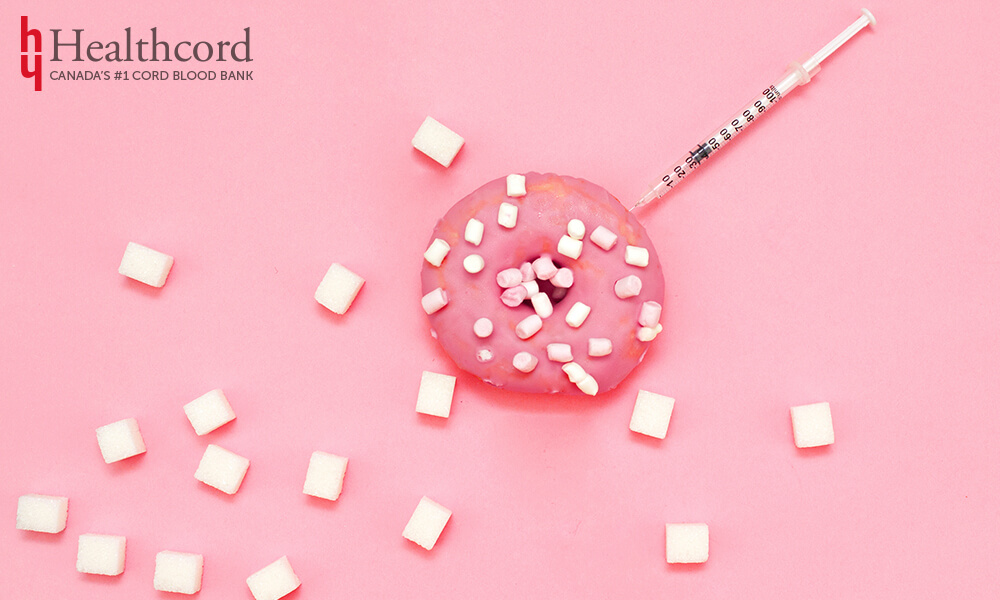Canada's Largest & Oldest Cord Blood Bank
Are you ready to see your baby bump yet? We hope you are, because the bump will likely make a debut soon.
This Week’s Highlights
Your baby is just a tiny ball of cells
The zygote starts its journey down to the uterus
Amniotic fluid starts building up in your uterus
Your Baby at 10 Weeks
Your baby is the size of a strawberry, measuring about 1.2 inches (3.1 centimeters) from head to rump and weighing in at about 0.1 ounces (4 grams).
Baby Development at Week 10
This is a big week for your baby because he or she is entering the fetal stage. All of the major organs are now fully formed. Your baby will double in size in the next three week. How’s that for growing?
Your little ones heart is now fully developed, beating away at about 180 beats per minute. Other organs are like the brain, liver and kidneys are starting to function. The webbing has disappeared from between the fingers and toes. Arms and legs can be rotated at their joints and the arms are able to meet over the heart. You may not feel it yet, but the baby is active and moving right now.

First trimester genetic tests
If you have decided to have them done, around 10 weeks is when first trimester genetic tests are performed. These tests are optional, but are highly recommended to all expectant moms, since a blood test coupled to a nuchal translucency screening (NT scan) can give you early indications on genetic abnormalities.
During the NT test a technician will use ultrasound to measure the thickness of the fluid around the skin at the back of the baby’s neck (nuchal fold). The blood test looks at cell-free fetal DNA generated from cell released by the placenta in to maternal blood. These screens can identify the risks of Down syndrome, Edward syndrome, Patau syndrome and other chromosomal abnormalities.
The first trimester blood test and the NT test are non-invasive. However, if abnormalities are discovered in these initial tests, your healthcare provider may order more invasive tests such as chorionic villi sampling (CVS) or amniocentesis. CVS is done between 10-13 weeks, where samples are taken form different locations using a needle through the belly or by collecting cells from the placenta through the vagina. Amniocentesis is done between weeks 15-20.
Again, genetic screening is completely optional. Some moms want the tests done so they can prepare, while others feel they can result in unnecessary stress and invasive testing. The choice is up to you and your partner. Talk to you healthcare provider to get more information about genetic testing.

Pregancy Tip
Your breasts are growing and changing. It may be worth splurging on a professional bra fitting to find well-fitting underwear. If you are planning on breast-feeding, you can actually purchase your nursing bras now.

Your Bump at 10 Weeks
Your bump may ‘pop’ or start to show this week. For some moms it will be just a slight roundness in the lower abdomen, for others it will be more noticeable. The shape of your bump depends on your body type.
How Your Body is Changing
Your uterus will continue to expand in the coming weeks. At the moment, it is about the size of an orange. You may experience round ligament pain or growing pain on the underside of your belly, as these ligaments stretch and thin out. As your belly gets heavier, it will pull on these ligaments causing sharp or dull pain.
This week, the yolk sac, which has been providing the baby with nutrients, will continue shrinking and the placental will take over the task of providing the baby with the nutrients and clearing off waste. The blood supplies of the baby and the mother are connected through the umbilical cord.
Both the placenta and the umbilical cord are discarded after birth. Did you know they are sources of valuable newborn stem cells, and if possible you should consider saving them? Find out more about newborn stem cells and cord blood banking here.
Type 1 Diabetes & Stem Cell Therapy
“A landmark has been set. The possibility of an unlimited supply of insulin-producing cells gives hope to people living with type 1 diabetes,” says Eelco de Koning of Leiden University Medical Center, a co-author of an accompanying commentary published in Cell Stem Cell.” “Despite the absence of relevant clinical effects, this study will remain an important milestone for the field of human PSC-derived cell replacement therapies as it is one of the first to report cell survival and functionality one year after transplantation.”
We are always keeping track of the latest uses for cord blood and stem cell therapies: https://www.healthcord.com/cord…/cord-blood-treatments/…
Source: https://www.sciencedaily.com/rel…/2021/12/211202113432.htm
How Far Along are You?
10 weeks in, 30 weeks to go! You are now a quarter of the way thorough your pregnancy. Even though pregnancy is measured in weeks this means you are in your third month of pregnancy.
Diet at Week 10
Have you been able to cut down on your caffeine intake yet? Recommended caffeine intake during pregnancy is 200 milligrams a day. Just to give you perspective, a 16 oz (500mL) cup of mocha can have as much as 175 mg of coffee. One 12oz (375mL) cup of regular coffee about 260mg. You will want to limit your caffeine intake to one small 8 oz cup of coffee at this stage.
Tea has less caffeine ranging from 30mg to 130mg per 12oz cup. So you may want to try swapping your coffee for herbal tea.
Just make sure you are drinking at least 8 glasses of liquid a day (no pop or fruit juice). Hydration will help with many pregnancy symptoms including headaches, morning sickness, and constipation.

Invest in Your Baby’s Future by Preserving Newborn Stem Cells
Pregnancy Symptoms at Week 10
Visible veins – You may notice that your veins have become more visible this week, particularly if you are fair skinned. This is another side effect of the increased circulation.
Constipation – Constipation usually affect moms in their second or third months of pregnancy. The same pregnancy hormones that relax your muscles and joints, also relax muscles in your digestive tract. This means food is passed along at a slower rate causing your system to be backed up a bit. Including fibre-rich foods in your diet can help. However, if your system is not used to a high fibre diet, try to introduce these foods gradually.
Changes in vaginal discharge – Changes in vaginal discharge are due to increase in blood supply and hormones. While this is normal, if you notice a strong odour or a colour change, experience itching or bleeding, you will want to contact your healthcare provider. Hormonal changes makes women more prone to infections, so you want to have them treated as early as possible.
Bloating and gas– The pregnancy hormone progesterone causes smooth muscles in your body to relax, which includes the muscles of the digestive track. As a result, digestion slows down giving your body more time to absorb nutrients, so it can be passed on to the baby. Bloating is one unfortunate side effect caused by this slow down.
Food aversions and cravings – It is natural to want a very particular flavour of ice cream or a specific brand of spicy noodle at some point during your pregnancy. But, if you feel like eating clay or laundry starch, contact your healthcare provider as these craving are indicative of nutritional deficiencies.
Heartburn and indigestion– Your digestive systems behaves differently during pregnancy owning to pregnancy hormones. The same hormones that relax your muscles and joints, also relax muscles in your digestive tract. This means food is passed along at a slower rate through your system causing bloating, gas and heartburn. The slow down is actually beneficial to the baby, since it gives your body time to better absorb nutrients from food, which can then be passed on to the baby through the placenta. Try keeping a food diary and taking note of the food that lead to indigestion and heart burn so you can avoid them.
Have Questions about Cord Blood Banking?



